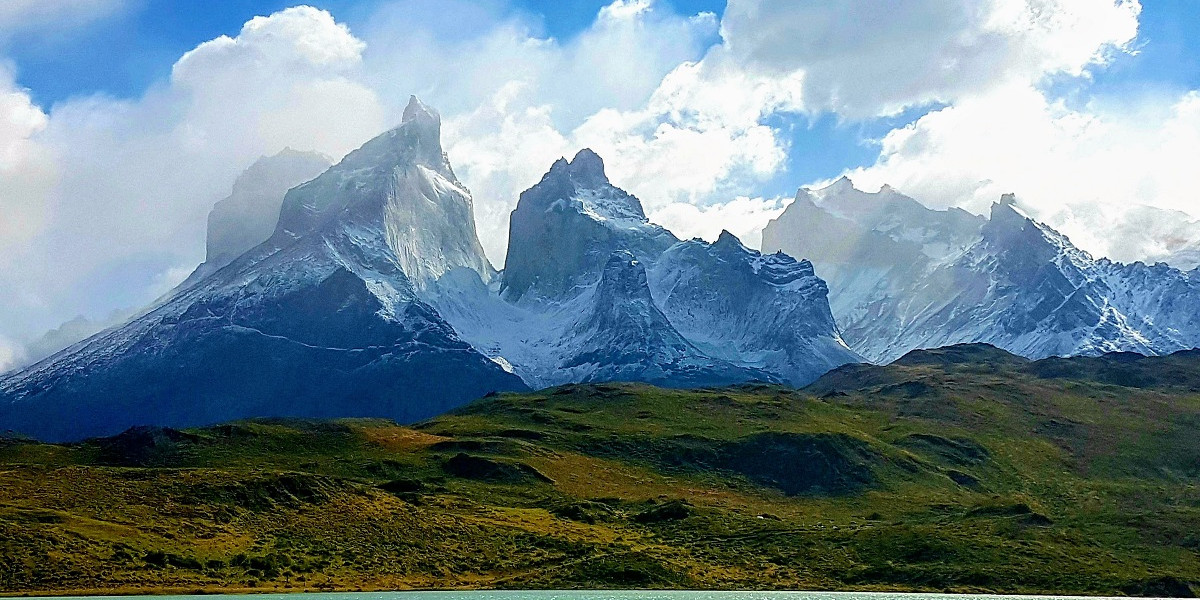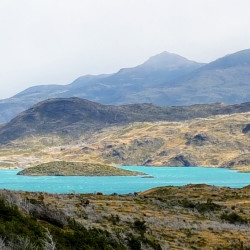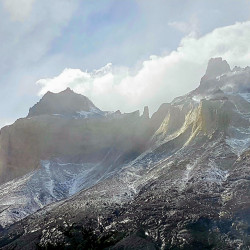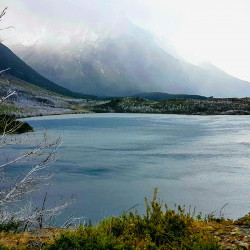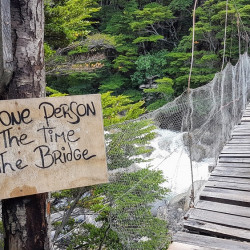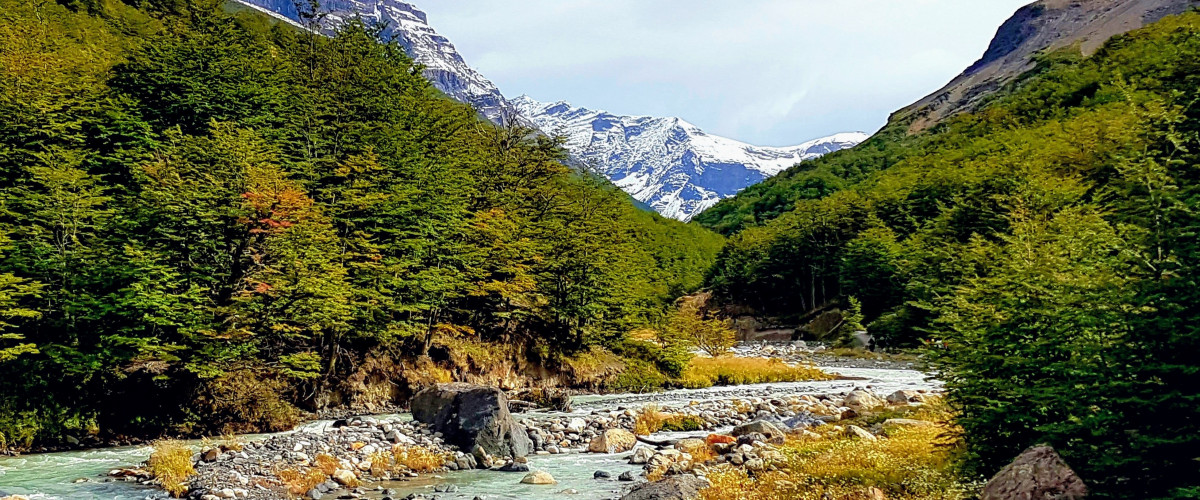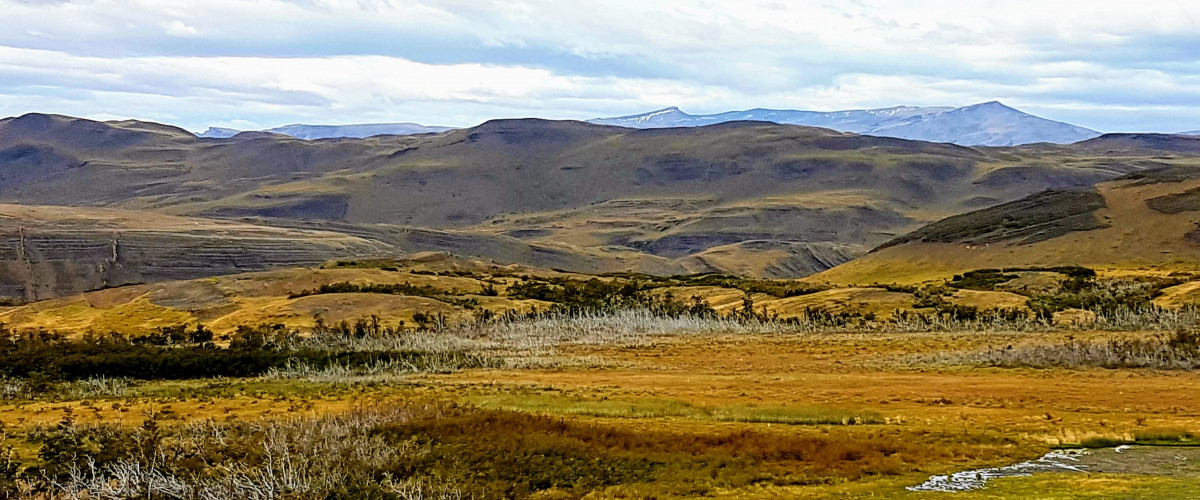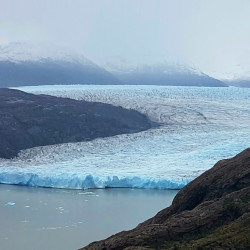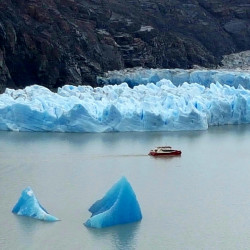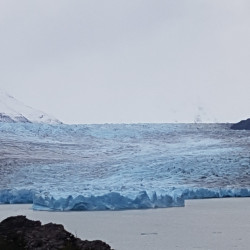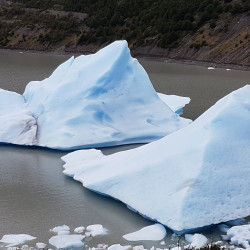As I rolled over in my deliciously warm, cosy bed to the tremendous sound of the rain and wind bellowing through the valley, I revelled in the joy of being tucked up in the safety and warmth of Refugio Paine Grande rather than be out there camping. It sounded terrifying, and explained the look of discombobulation on my fellow hikers’ faces the following day (if you’ve done a muddy year at Glastonbury, you’ll know the look I mean). Some people were clearly ill-equipped for hiking in five days of torrential rain. I, on the other hand (smug face), found out, with every delightful step, that my new walking boots were perfectly waterproof, and my waterproof trousers and jacket were also holding out to keep every drop of water out. So My first tip for doing the W-Trek is don’t, for one minute, consider going without proper waterproofs and take a good dose of resilience.
My second tip is – don’t worry, you won’t get lost. In a country a long way from home, without the same luxuries of mountain rescue that we have, I wondered whether it was safe for me to hike alone. However, as I discovered, it is a well marked path and, unlike hiking in the UK where there are many converging paths from which you have to make choices, the W-trek seemed to be one clear path which would be difficult to lose. (Having said that I met two separate hikers who did manage to get lost). If you are planning to hike this solo, from my personal experience I would say it is pretty safe.
As I didn’t want to take a tent and camping gear to South America, I went through an agent (Vertice Tours). After a little research, I also found out that due to a change in booking systems, trying to book anything independently had become arduous, if not impossible (at beginning of 2018), and I didn’t have time for the hassle of it. More recently, I have looked Venice Tours up on TripAdvisor and their reviews are terrible. My experience of them was pretty good although like most things in Patagonia, it was bloody expensive. They booked my beds in the refugios, an arrival drink (Pisco Sour is perfect after a day of hiking 🙂 ), an evening meal, breakfast and lunch bag as well as transport tickets such as the bus to the start point and the ferry back. All my tickets and information was sent to the guest house where I was staying in Puerta Natalas. Basically all I had to do was walk.
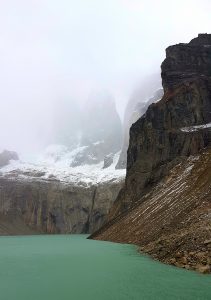
The Torres del Pain is full of colours and moods. Each section of the trek offers another version of wilderness: jagged peaks, intensely blue glaciers, forests and wild flowers, turquoise lagoons, tumultuous rivers swollen with the rain, driving mist and shafts of sunlight; It is spectacularly beautiful. As I walked up towards Camp Italiano, a huge swathe of white cloud skimmed steadily over the surface over the Lago Skottsberg, sweeping in like a tidal wave. It was a strange sight which I appeared to be sharing with absolutely no-one. Despite there being many hikers doing the W-trek, I found myself in perfect solitude for much of it.
The hike up to the Torres del Paine (the blue towers), as you would expect, is the busiest part of the trek, and the most challenging. As I neared the top, a squall of icy rain and mist flew in swiftly. By the time I reached the top, the infamous towers had almost disappeared behind a curtain of cloud and the rain was battering me. It was wild and beautiful but I didn’t waste anytime being disappointed about the view… you can guarantee in Patagonia that they’ll be another incredible sight along shortly.

